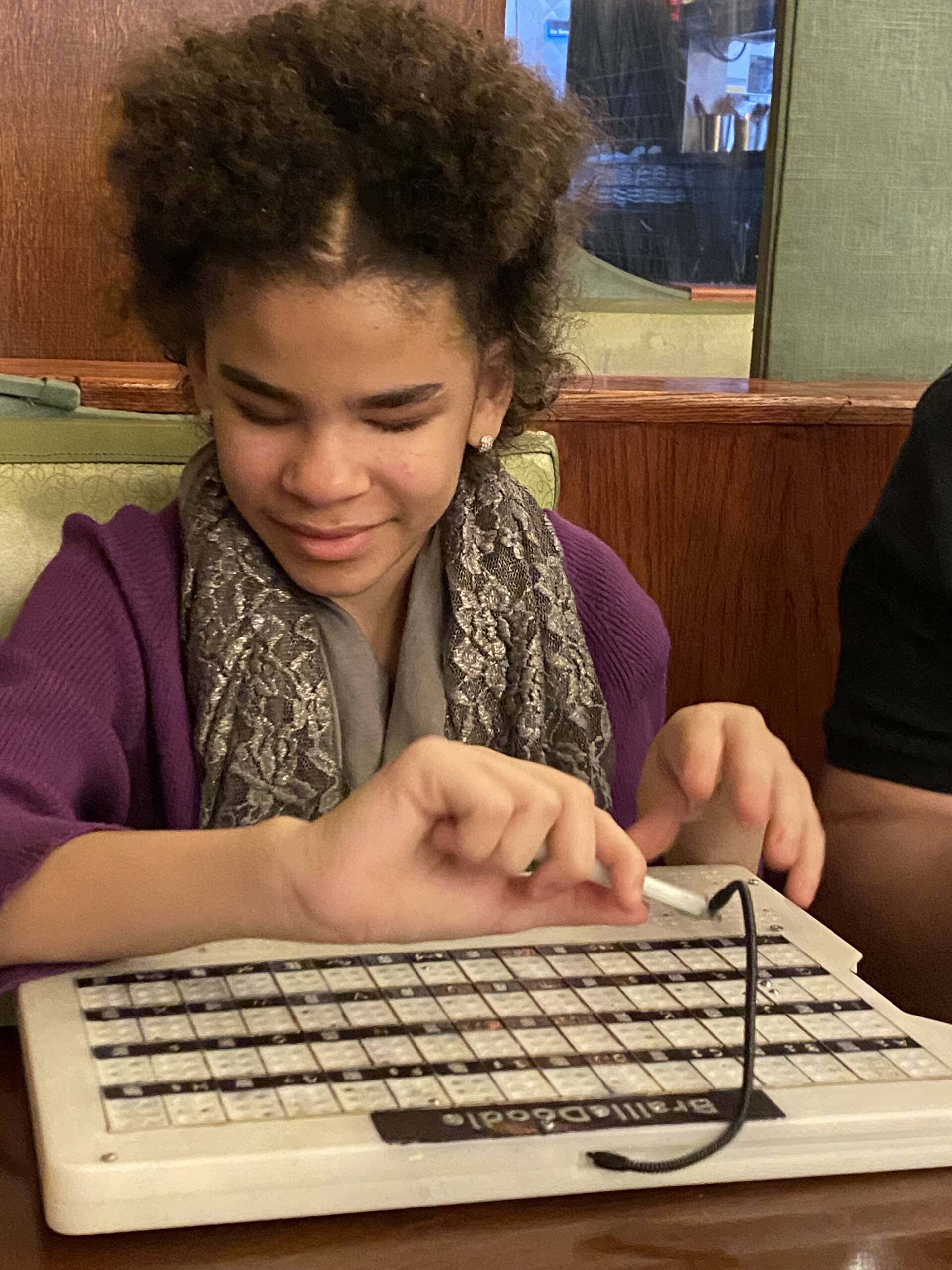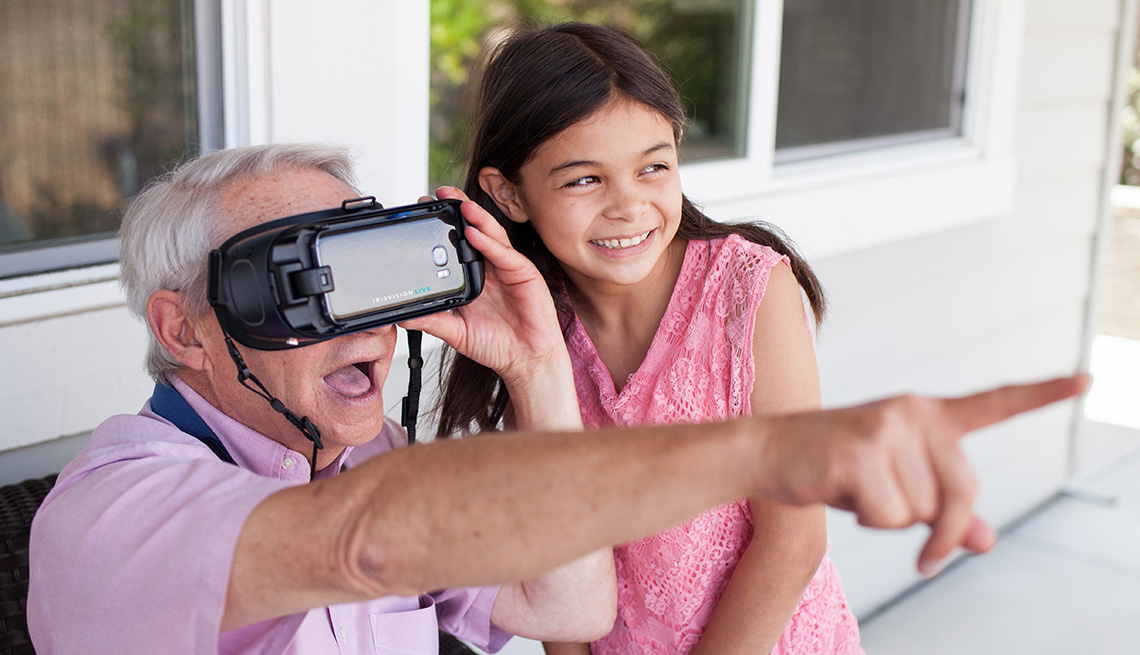Empowering Freedom With Assistive Innovation for the Blind
The combination of assistive innovation right into the lives of people with aesthetic problems stands for a significant development in promoting freedom and self-sufficiency. From cutting-edge display visitors to innovative smart walking sticks, these tools not just improve everyday navigation and communication yet likewise equip users to involve meaningfully in different facets of life. As we explore the myriad benefits and real-world applications of these technologies, it ends up being crucial to check out the hidden elements that add to their efficiency and the capacity for future developments in this crucial field.
Introduction of Assistive Innovation

The advancement of assistive technology is grounded in principles of inclusivity and empowerment. Advancements in software application, equipment, and sensory enhancements supply individuals with alternatives customized to their details requirements. From screen viewers that convert text to speech, to tactile tools that convey details through touch, these devices change the means individuals involve with their environments.
In enhancement to useful applications, assistive innovation fosters better social incorporation and participation in different fields, consisting of education and employment (Assistive technology for the blind). As research and development remain to advance, the possibility for assistive modern technology to even more enhance the lives of visually impaired individuals continues to be promising, leading the way for a more fair culture where everybody can prosper
Kinds Of Assistive Instruments
A variety of assistive gadgets have actually arised to support people with aesthetic disabilities, each created to satisfy certain requirements and improve everyday functioning. These devices vary from low-tech solutions to modern developments, supplying varied choices for individuals.
Low-tech gadgets consist of magnifiers and large-print materials that assist in reading and writing. Braille tools, such as Braille styluses and slates, enable responsive analysis and communication. Alignment and mobility help, like white walking canes, aid customers navigate their environment securely.
On the higher end of the range, electronic zoom systems and screen visitors use significant assistance. Electronic magnifiers allow customers to increase the size of message and pictures on screens, while display viewers convert digital web content into synthesized speech, assisting in access to details on computer systems and smartphones.
Smartphone applications likewise play an essential duty, providing attributes like text acknowledgment and navigation assistance. Wearable modern technology, such as wise glasses geared up with increased fact, is becoming an appealing tool to enhance situational awareness.
Benefits of Assistive Innovation
The assimilation of assistive innovation dramatically boosts the lifestyle for people with visual disabilities. These modern technologies encourage individuals by advertising independence, enabling them to browse their atmospheres better and execute everyday tasks with greater convenience. For example, display readers and magnifying software permit people to accessibility electronic information, cultivating professional and educational chances that might have previously run out reach.
Additionally, assistive gadgets such as smart walking sticks and general practitioners applications give real-time navigating assistance, boosting movement and safety. This enhanced autonomy not just improves self-esteem however likewise motivates social involvement, allowing users to participate more fully in their areas.
Assistive innovation additionally promotes interaction, aiding customers get in touch with others via voice acknowledgment and text-to-speech applications. This ability is crucial for preserving partnerships and accessing crucial information.
Additionally, the customization options available with several assistive modern technologies ensure that individuals can tailor gadgets to their certain needs, further improving usability and effectiveness. Generally, the benefits of assistive modern technology for individuals with aesthetic disabilities are pop over here extensive, promoting a much more comprehensive culture where everybody can pursue their objectives and desires.
Case Studies and Success Stories
Highlighting the transformative effect of assistive innovation, numerous study illustrate exactly how people with aesthetic impairments have effectively incorporated these devices into their everyday lives. One engaging instance involves an university student that made use of display reading software to browse online resources and scholastic materials efficiently. This modern technology not only facilitated her education however also boosted her self-confidence in joining discussions and team tasks.
Another study includes a specialist that utilizes a mobile phone application made for navigating and things acknowledgment. By utilizing this app, he has gained back autonomy in both his personal and browse around this web-site workplace, allowing him to commute individually and engage with associates extra efficiently.
In addition, a senior citizen shared her experience with braille e-readers, which allowed her to access a vast range of literary works and remain connected with her community through publication clubs.
These success tales highlight the essential function of assistive technology in fostering freedom, improving lifestyle, and advertising social combination for individuals with visual problems (Screen readers for the blind). By accepting these cutting-edge devices, users can overcome difficulties and take opportunities that add to their professional and individual gratification

Future Trends in Assistive Innovation
Advancement in assistive technology is positioned to redefine the landscape of support for people with aesthetic disabilities. Emerging trends emphasize the combination of fabricated knowledge (AI) and maker discovering, which enhance the functionality of devices that aid with navigation and info availability. As an example, AI-driven applications are now qualified of translating visual information in real-time, allowing individuals to engage with their atmosphere extra individually.
Furthermore, the advancement of wearable modern technology is progressing swiftly. Smart glasses geared up with augmented truth (AR) can supply audio descriptions of surroundings, transforming just how individuals communicate with public rooms. These gadgets not just advertise freedom but also foster social addition.
In Addition, the Web of Points (IoT) is making homes smarter, permitting for seamless connection in between assistive tools and daily devices. This connectivity equips individuals by enabling automated reactions and voice-activated controls customized to specific demands.
Verdict
In conclusion, assistive technology plays a crucial duty in empowering people with aesthetic impairments by enhancing their independence and interaction with their surroundings. The diverse series of applications and devices available not just helps with navigating and interaction but additionally promotes social combination and opportunities for expert and individual growth. As developments continue in this area, the capacity for enhancing the lifestyle for those with aesthetic problems will certainly increase, fostering higher freedom and empowerment.
